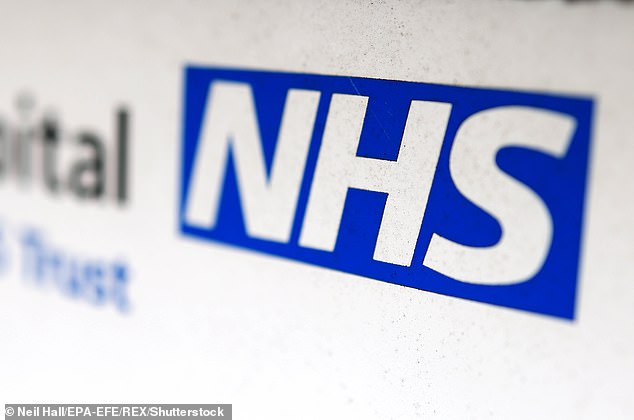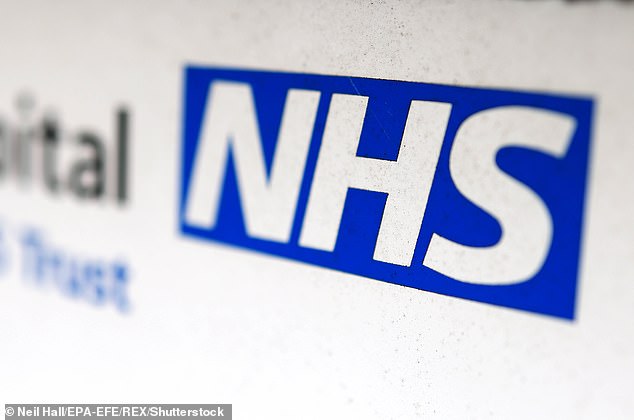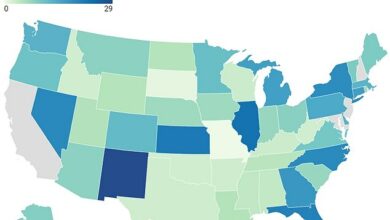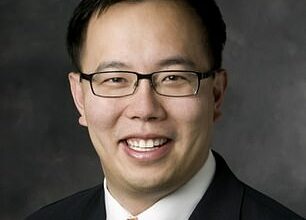Huge 800 per cent increase in the number of foreigners using private healthcare in the UK… while doctors claim they are cutting NHS hours ‘to protect their welfare’ and backlogs continue to mount



New data shows the number of medical tourists visiting the UK for private healthcare, including cancer treatments, has increased by as much as 800 per cent in less than a decade.
Figures from the Private Healthcare Information Network (PHIN), a government-backed body that tracks paid-for treatment in the UK, show that 10,640 patients from outside the UK were admitted to hospital last year.
A fifth of them received expensive treatment at a facility run by the NHS, a controversial practice critics say is draining much-needed resources from the health service.
This is despite the latest NHS data showing that almost 6.4 million patients are on waiting lists for elective care in England alone.
Despite booming business in private wards, NHS medics at ‘breaking point’ are reportedly seeking to cut their working hours to ‘protect their wellbeing’.
The vast majority of foreign private patients, more than 15,000, registered since 2016 came from wealthy countries in the Arabian Peninsula, such as Oman, Qatar, Saudi Arabia and the United Arab Emirates. This was followed by Ireland (1,565) and Nigeria (565).
The total number of over 10,000 patients for 2023 is an increase of 32 percent compared to last year, but a huge increase of 798 percent compared to the 1,185 registered patients in 2016.
Growth within the NHS’s so-called Private Patient Units (PPUs) was even greater in 2023, with a 52 per cent increase on the previous year.
PPUs are a controversial practice in the NHS. It is estimated that one in every 100 beds in the NHS is reserved for private patients.
Foreigners seeking private care in the UK usually undergo chemotherapy for cancer or an endoscopy, where a small flexible camera is inserted into the digestive system to diagnose various conditions.
Critics argue that PPUs are increasing healthcare inequalities in the UK and exacerbating NHS patient backlogs.
Many of the doctors who provide such private treatment also work in the NHS, meaning that working for the PPU directly reduces the number of hours they can spend with public patients.
Some hospitals also use their public services to advertise their private businesses, claiming that if something goes wrong during a procedure, taxpayer-funded specialist care and emergency care are readily available, unlike some private hospitals.
NHS hospitals that have set up PPUs defend the arrangements by arguing that they can reinvest profits from private treatment into public services.
But NHS hospitals don’t actually publish profit data, only revenues. The most recent publicly available data suggests they made almost £600m in one year.
However, this varies. Research by the Centre for Health and Public Interest shows that at least one trust’s PPU has lost £18m since it opened.
And ultimately, not all patients pay: NHS hospitals have written off almost £2m in unpaid bills over a number of years for patients treated in their PPUs.
Critics also argue that much of the profits PPU makes are reinvested in expanding the fund’s private healthcare activities, rather than in its public activities.
Another common defence of PPUs is that they free up capacity within the NHS by giving patients with the right resources access to an alternative care system, in theory reducing waiting lists.
However, critics argue that this defence does not apply when it comes to PPUs that import tens of thousands of patients from abroad who are not reliant on the NHS.
This is according to new data from the NHS which shows that the waiting list for routine healthcare treatments in England has increased for the third month in a row.
It is estimated that there were 7.62 million treatments in the queue at the end of June, of which 6.39 million were patients.
This is an increase compared to the 7.60 million treatments and 6.37 million registered patients at the end of May.
The figures are still lower than the record high of 7.77 million treatments and 6.50 million registered patients in September 2023, but the total has been rising again since April.
In February 2020, the last full month before the start of the Covid-19 pandemic, the list stood at 4.57 million.
Since February 2024, treatment provided by social services has not been included in the data. This means that the total number of people waiting for treatment in England is likely to be higher than the most recent figures.
Rates for cancer treatments, including chemotherapy as received by foreign nationals in private care in the UK, also continue to meet targets.
The percentage of patients who waited no longer than 62 days for an emergency referral for suspected cancer or an upgrade to their first definitive cancer treatment in June was 67.4 percent, compared with 65.8 percent in May. The target is 85 percent.
Meanwhile, the UK’s health regulator has warned that doctors have reached “breaking point” and many are having to cut their working hours to “protect their wellbeing”.
Doctors are “taking matters into their own hands” by cutting their working hours and turning down extra work, according to the General Medical Council (GMC).
This could derail Labour’s plan to increase evening and weekend services in an attempt to clear the backlog of care in the NHS.
The GMC warned ‘the workload is high and professional satisfaction is low’.
A survey by the regulator found that 41 percent of doctors refused to take on additional work, compared to 23 percent in 2021.
Of those who refused to work extra hours, nearly one in five did so due to ‘pressure on workload and capacity’. This is an increase from 8 percent of doctors who cited this reason in 2021.
The GMC report said: ‘For individual doctors this is often the only responsible way to deliver safe care, but such steps further restrict the capacity of the health service.’
In the foreword to the report, GMC chief executive and registrar Charlie Massey and GMC chair Professor Dame Carrie MacEwen wrote: ‘The UK health service is in a critical state and those working within it are on the brink of collapse.’

Figures from the Private Healthcare Information Network (PHIN), a government-backed body that tracks private healthcare in the UK, showed that 10,640 patients from outside the UK were admitted in 2023. Of these, 2,310 went to private care within the NHS itself, a controversial practice that critics say siphons much-needed resources from the health service.

The vast majority of foreign private patients, more than 15,000, registered since 2016 came from wealthy countries in the Arabian Peninsula, such as Oman, Qatar, Saudi Arabia and the United Arab Emirates. This was followed by Ireland (1,565) and Nigeria (565).
“These data show that more and more physicians are taking matters into their own hands, not only to protect their own health and well-being, but also that of their patients.
‘For many, this will often be the only responsible way to provide safe care. But this action carries risks.
‘We must make it clear that it is essential that doctors protect their wellbeing, but they should not feel that their only option is to reduce their working hours.
‘This poses challenges in terms of capacity planning, putting further pressure on already overloaded services.
An NHS England spokesperson said: ‘We have worked hard to improve the training and working lives of doctors and we know there is still much work to be done, particularly with the risk of burnout.
‘As part of the NHS long-term workforce plan, we are taking action to further improve working conditions. This includes increasing choice and flexibility in training and reducing double inductions, so clinicians can spend less time on administration and more time treating patients.
‘We are also strengthening occupational health services and reviewing our mental health and treatment provision for staff, to ensure everyone working in the NHS has the right support.’
A Department of Health and Social Care spokesman said: ‘The NHS is broken and the Secretary of State has made it clear he wants to work with doctors to get care back on track so that patients and staff can benefit most from it.
‘NHS England is working to address training bottlenecks to ensure the health service has enough staff for the future. In addition, we will recruit over 1,000 newly qualified GPs by the end of the year to help ease the pressure on general practice.’
PHIN Chief Executive Dr Ian Gargan said of the data release: ‘We work with the 650+ private hospitals in the UK, including NHS PPUs, and the data they provide us seems to show that patients – particularly those from the Middle East – increasingly value the private healthcare sector in the UK.
‘More are added every year, reaching a record number in 2023.’
‘The growing number of international patients not only ensures that these patients receive the care they need, it also ensures that private healthcare providers can maximise their capacity and gives the UK economy a boost.’




